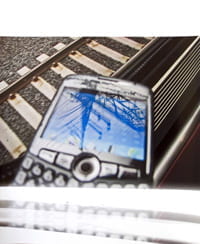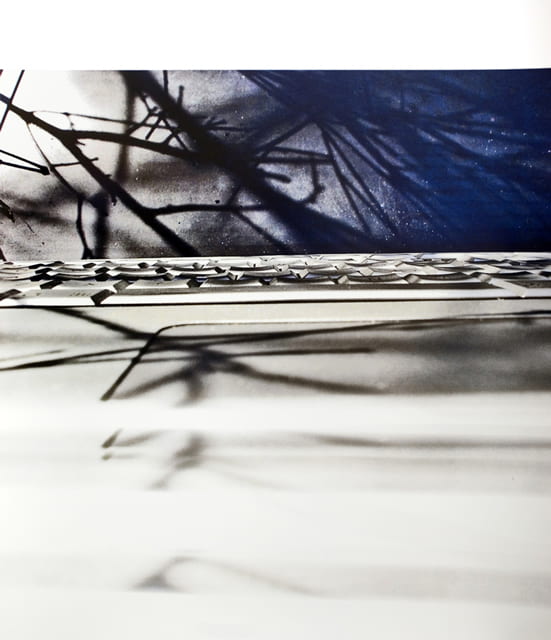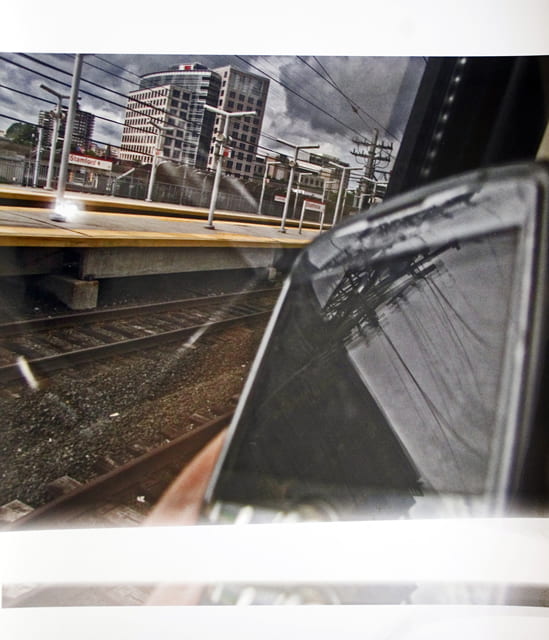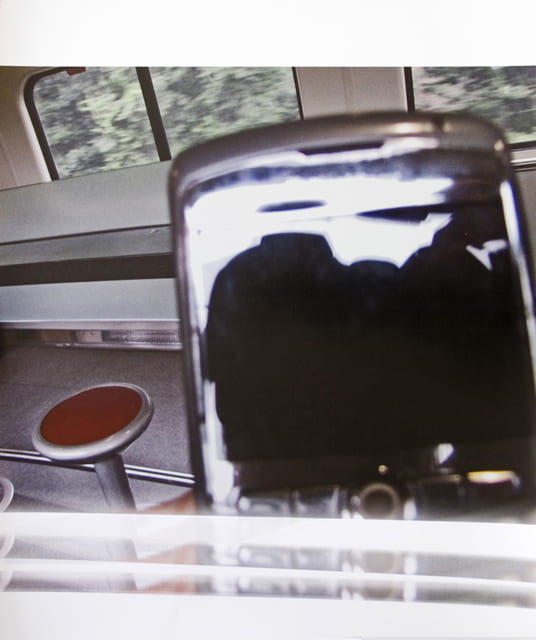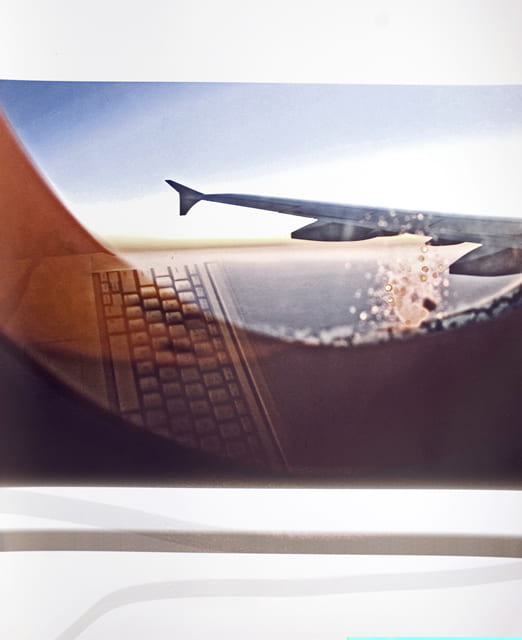THE OFF-MODERN CONDITION
Excerpt from The Off-Modern Condition, by Svetlana Boym (forthcoming)
At the end of the past century various thinkers mourned or celebrated the “ends” of history and of art, of the book and of humanity as we knew it. While different “posts” succeeded one another like ephemeral post-it notes in the overdue book of life, many premodern myths took hold of the intellectual and spiritual territory.
Instead of fast-changing prepositions—“post,” “anti,” “neo,” “trans,” and “sub”—that suggest an implacable movement forward, against or beyond, andtry desperately to be “in,” I propose to go off: “Off” as in “off quilter,” off Broadway, “off the path,” or “way off,” off-brand, off the wall and occasionally “off-color.” “Off-modern” is a detour into the unexplored potentials of the modern project. It recovers unforeseen pasts and ventures into the side-alleys of modern history at the margins of error of major philosophical, economic and technological narratives of modernization and progress. Off-modern reflection involves exploration of the side alleys and lateral potentialities of the project of critical modernity. In other words, it opens into the “modernity of what if” rather than simply modernization as it is. (Critic and writer Victor Shklovsky proposes the figure of the knight’s move in chess that follows “the tortured road of the brave,” preferring it to the master-slave dialectics of “dutiful pawns and kings.”)
Off-modern follows a non-linear conception of cultural evolution; it could follow spirals and zigzags, the movements of the chess knight and parallel lines that on occasion can intertwine asymptotically. Or as Vladimir Nabokov explained: “in the fourth dimension of art parallel lines might not meet, not because they cannot, but because they might have other things to do.” As we veer off the beaten track of dominant modern teleologies, we have to proceed nlaterally, not literally, and discover the missed opportunities and roads not taken. These lie buried in modern memory like the routes of public transportation in the American cities that embraced car culture a little too wholeheartedly. Off modern has a quality of improvisation, of a conjecture that doesn’t distort the facts but explores their echoes, residues, implications, shadows.
Off-modern art has both a temporal and a spatial dimension to it: some projects from different corners of the globe can appear belated or peripheral to the familiar centers of modern/postmodern culture. The Off modern has been embraced by international artists from India to Argentina, from Georgia to Cypress, from Canada to Albania. For their periphereral situation reveals the eccentricity of the center, and asynchronicity questions the progress of cultural trends and artistic movements that are supposed to succeed one another like well-behaved citizens in the express checkout line. The off modern does not focus on the external pluralism and values of states with their political PR and imperial ambitions, but on internal pluralities within cultures tracing elective affinities and diasporic intimacies across national borders.
There is something preposterous in our contemporary moment which we don’t know how to describe. I see in it not a conflict between modern and antimodern or a pure “clash of cultures,” but rather as a clash of eccentric modernities that are out of synch and out-of phase with each other both temporally and spatially. Multiple projects of globalizations and glocalizations overlap but don’t coincide. In this context of conflicting and intertwined pluralities, the prefix “post” is passé.
Off-Modern New Media addresses these pluralities and multi-directionality. It is not driven by the latest sales pitch but by a meditation on technology itself. At the same time, it is ludic, not Luddite. It reflects on the aging of technological progress itself. In our lives, high tech and low tech enter into illicit cohabitation, and we expend as much effort in disconnecting from intrusive techno-interfacing as connecting to it, so we try to go offline or visit the “www.gethuman.com” website to recover the fuzzy logic of human error.
The preposition “off” is a product of linguistic creativity and fuzzy logic. It developed from the preposition “of,” with the addition of an extra “f,” an emphatic and humorous onomatopoeic exaggeration that imitates oral speech. The “off” in “off-modern” designates both the belonging to the critical project of modernity and its edgy excess. It signifies both intimacy and estrangement, belonging and longing to take off. In the twenty-first century, modernity is our antiquity. We live with its ruins, which we incorporate into our present, leaving deliberate scars or disguising our age marks with the uplifting cream of oblivion. Off modern then is not antimodern; it is closer in fact to the critical and experimental spirit of modernity than it is to the existing forms of industrial and postindustrial modernization. In other words, it opens into the “modernity of “what if,” and not only modernization as it was.
Off modern is not an “ism.” Rather it is an alternative prism of vision and a way of understanding the preposterous aspects of the present and the past. The off-modern can be lighthearted but it requires a deep conviction. This particular sensibility—perhaps,a Weltanschauung—crystallized and came to the foreground in the first decade of the twenty-first century,but we might discover some trans-historical elective affinities for it in earlier times. It is also a form of thinking through logos and pathos, memory and imagination, expanding the regimes of the sensible, wherever techne and muse and gut guide us.
We might be living on an edge of the era when the accepted cultural myths of late capitalism and of technological or digital progress no longer work for us. We are right at the cusp of a paradigm shift, and to anticipate it we have to expand our field of vision. The logic of edginess is opposed to that of the seamless appropriation of popular culture, or the synchronicity of computer memory. This is a logic that exposes wounds, cuts, scars, ruins, the afterimage of touch. Its edginess resists incorporation and doesn’t allow for a romance of convenience. Clarification: the off-moderns are edgy, not marginal. They don’t wallow in the self-pity or resentment that comes with marginalization, even when some of this is justified.
To be edgy could also mean avoiding the logic of the cutting edge, even if the temptation is great not to. If you are just off the butcher’s knife on the cutting edge you will end up obsolete before you are examined. The logic of the cutting edge makes you part of the bloody action movie so common in contemporary popular culture, where tears and affects are only computer generated. Edginess takes a longer duration of time. Only at the risk of being outmoded could one stay con-temporary.
THE OFF-MODERN
PANIC MANIFESTO for 2010
or, What is to be done when everything has been done?
Today we find ourselves caught between two abysses—on one side the horror of oversaturation of everything and on the other a horror vacui—a horror of blank space or a black hole, of undifferentiated silence or noise. We experience an attack of boundless hüzün, a recognition of our unredeemable belatedness and nostalgic longing, thick and dark like the smoke of post-imperial Istanbul. We live in the age of informational overkill and always in the overtime. Everything seems to have been written, painted, and photographed, pixelated ad nauseum; revolutions twisted, histories’ lessons waisted, avant-gardes co-opted, traditions reinvented, jobs filled. Even forgetting history for the sake of life—as Nietzsche once advocated —makes no sense anymore since we feel that history has always already forgotten us in forever accelerating “real time.”
And what’s worse, once we step away from social media, the horror vacui overtakes us—the fear of the unfilled moment and of useless expenditure. Anxiously, our fingers start pushing the buttons of the imaginary blackberry in the air texting—to whom it may or may not concern—the unbearable vacuity of our being, friending and unfriending the indifferent gods.
In the age of niche marketing we are nostalgic for some kind of a common canon, or at least a common ground for contestation, a shared map to deviate from.
Postmodernists responded to this double horror of excess and vacuity with a canny simulation, speculation, and deflation of values hoping that the art market could turn culture into a subprime derivative and get some hefty short-term gains off it. But what if our fingers don’t rise in defeat and bow in the predictable quotation marks? Instead of speculating and simulating the market, we can interrupt it, make a lateral move, think slow thoughts, continue making, flying, falling, failing, and fullfilling our urge to respond —however tongue-tied —to the contemporary world.
Honestly, there is no cure for existential anxieties, only provisional placebos at the holiday discount; but we can still unfold the space between the two abysses and inhabit it better.
The mysterious quest for aesthetic knowledge continues—even when it doesn’t provide a good living—in the interstices between the virtual and the worldly, in the new singularities of the yet unnamed first decade of the twenty-first century, in the new configurations of our intertwined histories that have not been described yet. So don’t tweet only to the market rhythms and don’t look for the charismatic battle cries that repair longing with belonging. Take a moment to interface with yourself in the black mirror of a turned off-screen, take a walk on the blank spots of the google map.
Artists might be the last peripatetic philosophers who can still discover the lost common grounds and unforeseen solidarities— on and off the shared grid.
In Praise of Off
Off –the tip of your tongue tenses without touching anything. You’re just about to bite your lower lip and suppress idle talk. But then reluctantly you let the sound go through. “Off” comes out almost as a sigh of relief.
“Off” is colloquial and particular–not abstract and equalizing the way “post” was. It is somewhat untranslatable. Let each language find its own version of being “off” and being modern at the same time.
To a non-native English speaker, “off” sounds like child’s talk, somewhere between a game and language: if you didn’t know what “off” meant you could almost guess it. Sometimes there is more mouth than meaning there (so Nabokov characterized the kiss of one of his refugee-lovers.) If immigrants talk between themselves in their native language, the twittering pidgeon mother tongue that through years of exile becomes a hybrid and hyphenated American, “off” would be one word they would use in English: “Sabes, el tipo es un poco “off”; nu ona nemnogo “off.” Off is odd.
Off is the little gift of a preposition co-created by users of language in the past two centuries. I hear in it the traces of foreign accents–of ouch, ouff, bo, oi, ay.
“Off” suggests a dimension of time and human action that is unusual or potentially off-putting and embarrassing. It either describes something too spontaneous (off-the cuff, off-handed, off the record) or too edgy (off the wall), verging on the obscene (off color) or not in synch with the pace (off beat). “Off” is about life caught unawares. It is extemporaneous and humane. (Off-modern should not become ouch-modern or okh-modern, but neither is it quite an ommm-modern, for the modern subject thrives in a certain amount of incurable anxiety.)
We are warned that word play is bad for Internet searches. It requires constant disambiguation. Word play disorients the cookies installed in your hardware that collect information about you and send it to advertisers for niche marketing. So, off-moderns, beware, everything off-the market price will be advertised to you. But you have the option to turn your computer off and think off-line.
And yet, being off is not to be out or anti. Being off is a balancing act and a form of virtuosity. You are never completely off the hook. You have to exercise a special attentiveness, the vigilance of sense, the virtuality of imagination and engagement in worldly practice, not to be confused with the virtual interfacing in which the main physical relationship is between you and the tender buttons of your powerbook.
Off-modern acknowledges the synchopes and the off-beat movements of history that were written out from its dominant versions edited by the victors, who cared little about the dignity of the defeated.
Off-modern does not suggest a continuous history from antiquity to modernity to postmodernity, and so on. Instead it confronts the breaks in tradition, the gaps of forgetting, loss of common yardsticks, and disorientations that occur in almost every generation. Off-modern reflection does not try to cure longing with belonging and a remake of traditional yardsticks. Rather it produces offspring of thought out of those gaps and crossroads, opening up an alternative way to the intellectual history of modernity. It invites us to explore the garden of forking paths that hides behind the faÇade of our urban nature, to tell unpredictable stories of contacts and disconnects, to play with fictional illusions and masks, to be honest with ourselves and our ghosts.
To be continued…


